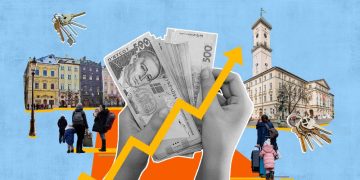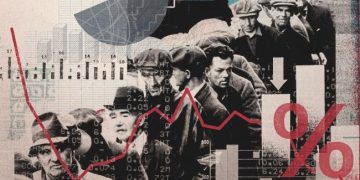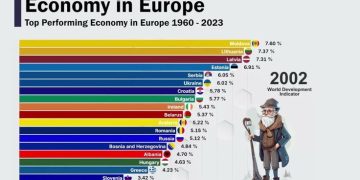The Digital Finance Revolution in Southeast Asia: Payments, Lending, and the Rise of a New Economic Power
Introduction: The World’s Fastest-Growing Digital Finance Lab
Southeast Asia (SEA) is undergoing one of the most rapid financial transformations in modern economic history. Over the past decade—and accelerating especially after the COVID-19 pandemic—digital finance has reshaped nearly every aspect of consumer behavior, business operations, and national economic strategy across the region.
From Jakarta to Manila, from Ho Chi Minh City to Bangkok, SEA’s digital economy has become a USD 200+ billion ecosystem, projected to exceed USD 1 trillion by 2030. At the center of this transformation is digital finance: mobile payments, digital wallets, online lending, e-commerce finance, remittances, digital banks, and tokenized assets.
Unlike Western markets, where legacy banking systems dominate, SEA leapfrogged directly into a mobile-first, cash-light, AI-driven financial ecosystem. Today, the region is not only catching up with global fintech but increasingly shaping the future of digital finance.
This article explores the key forces behind SEA’s fintech boom, the evolution of payments and digital lending, the rise of digital banks, cross-border financial connectivity, regulatory shifts, challenges, and the long-term outlook for Southeast Asia as a global digital finance power.
1. The Drivers Behind SEA’s Fintech Explosion
SEA’s fintech transformation is not accidental—it is the product of several powerful structural forces.
1.1 A Young, Mobile-First Population
SEA has one of the world’s youngest populations:
- 50% under age 30
- Over 450 million internet users
- Smartphone penetration above 80% in major markets
Young consumers are more willing to adopt digital payments, online banking, and AI-driven financial tools. This demographic advantage accelerates fintech diffusion far faster than in Europe or North America.
1.2 A Historically Underbanked Region
Despite rapid economic growth, SEA remains underbanked:
- Over 290 million adults have no bank account
- 70% lack access to formal credit
- Cash historically dominated daily transactions
This created a massive demand for alternatives—digital wallets, microloans, BNPL (Buy Now Pay Later), and mobile-first banks.
Fintech in SEA is not competing with banks—it is filling a vacuum that traditional banks never reached.
1.3 The E-Commerce and Super-App Ecosystem
SEA’s digital finance boom is tightly integrated with its e-commerce and super-app giants:
- Grab
- GoTo (Gojek + Tokopedia)
- Sea Group (Shopee)
- Lazada
- AirAsia
- MoMo
- TrueMoney
- LINE
- Zalo
These platforms transformed digital payments from optional to mandatory.
ShopeePay, GrabPay, GoPay, and Maya became essential tools for:
- food delivery
- ride-hailing
- online shopping
- utility payments
- digital entertainment
Digital finance and e-commerce grew together—creating a self-reinforcing ecosystem.
1.4 Government Policies and Regional Integration
SEA governments support fintech to increase financial inclusion and digital competitiveness.
Examples:
- Singapore: progressive licensing for digital banks, crypto hubs
- Indonesia: QRIS unified QR payments
- Malaysia: national digital banking licenses
- Philippines: InstaPay, PESONet real-time payments
- Thailand: PromptPay, cross-border QR payment networks
- Vietnam: aggressive digitalization agenda and e-payment incentives
ASEAN governments embrace fintech not as a complement but as a strategic economic engine.
2. Payments: The Core Engine of SEA’s Digital Finance Boom
2.1 Digital Wallets as the New Bank Accounts
Digital wallets dominate daily life in SEA.
Popular examples:
- GrabPay (regional)
- GoPay (Indonesia)
- ShopeePay (regional)
- OVO (Indonesia)
- MoMo (Vietnam)
- TrueMoney & PromptPay (Thailand)
- Maya & GCash (Philippines)
Digital wallets are used for:
- transportation
- supermarket purchases
- e-commerce
- bills and utilities
- mobile top-ups
- micro-investments
- micro-insurance
They effectively function as de facto bank accounts for millions.
2.2 QR Payments: SEA’s Universal Payment Language
QR code–based instant payments are a uniquely Southeast Asian success story.
Why QR works so well in SEA:
- low cost for merchants
- fast rollout
- no expensive terminals
- supports micro-businesses
- interoperable across countries
Examples:
- Indonesia’s QRIS: over 30 million merchants
- Singapore’s SGQR
- Thailand’s PromptPay
- Malaysia’s DuitNow
Even more transformative: ASEAN now has cross-border QR interoperability.
A tourist from Singapore can pay in Thailand by scanning a Thai QR code—with automatic currency conversion.
This is unprecedented globally.
2.3 Digital Remittances: A Critical Lifeline
SEA is one of the world’s largest remittance corridors.
Digital alternatives (Wise, Western Union Digital, ShopeePay, GCash) are:
- faster
- cheaper
- transparent
- mobile-first
For millions of migrant workers, digital remittances have become essential financial infrastructure.
3. Digital Lending: Democratizing Access to Credit
3.1 The Failure of Traditional Banks to Provide Credit
Banks in SEA historically prefer large enterprises and wealthy individuals.
For small businesses and low-income consumers, credit access was limited.
Fintech companies filled the gap by leveraging:
- e-commerce data
- transaction history
- mobile behavior
- AI-driven risk models
This created a new credit ecosystem.
3.2 BNPL: Southeast Asia’s Fastest-Growing Consumer Credit Tool
BNPL exploded in Indonesia, Malaysia, Singapore, and the Philippines.
Key players:
- Atome
- Kredivo
- Akulaku
- SeaMoney
- GrabPayLater
BNPL succeeds in SEA because:
- credit card penetration is extremely low
- young consumers prefer installment payments
- e-commerce integration creates frictionless adoption
BNPL has become a gateway to broader financial access.
3.3 SME Lending: Fueling the Region’s Micro-Entrepreneurship
SEA’s economy runs on micro and small enterprises (MSMEs), which make up:
- 90–97% of businesses
- 40–60% of GDP
- over 100 million jobs
Fintech SME lenders such as Funding Societies, KoinWorks, and Validus offer:
- supply chain financing
- invoice factoring
- e-commerce seller loans
- merchant cash advances
Digital lending is the financial backbone of SEA’s SME economy.

4. The Rise of Digital Banks
4.1 Why Digital Banks Work in SEA
Digital banks succeed because:
- branch networks are expensive
- mobile-first users trust online services
- eKYC is easy and widely adopted
- governments promote financial inclusion
Digital-only banks flourish in markets where traditional institutions never penetrated deeply.
4.2 Country-by-Country Breakdown
Singapore
- Grab-Singtel
- Sea Group
- Trust Bank (Standard Chartered + FairPrice)
Malaysia
- AEON Bank
- Boost Bank
- GXBank (Grab)
Indonesia
- Bank Jago (Gojek-backed)
- SeaBank
- Bank Neo
- Line Bank
Philippines
- Maya Bank
- Tonik Bank
- UNObank
Vietnam & Thailand
Digital banks emerging slowly due to stricter regulation.
4.3 What Digital Banks Offer
- high-yield savings
- fee-free accounts
- instant transfers
- seamless mobile onboarding
- microloans
- SME financing
- embedded financial services
Digital banks compete on user experience—not physical presence.
5. Cross-Border Financial Integration: ASEAN’s Quiet Revolution
The region is building one of the world’s most integrated digital finance networks.
5.1 Cross-Border QR Payments
You can now scan QR codes across:
- Singapore
- Thailand
- Malaysia
- Indonesia
- Philippines (pilot)
This is an unprecedented model for emerging markets.
5.2 Local Currency Settlement (LCS)
Countries increasingly settle trade in local currencies, reducing:
- currency conversion fees
- USD dependency
- FX volatility
This aligns with global trends toward regional monetary cooperation.
5.3 Digital Trade Infrastructure
SEA is investing heavily in:
- digital customs systems
- e-invoice standards
- digital ID interoperability
- real-time payments integration
This enhances both domestic and international capital flows.
6. Crypto, Tokenization, and the Future of Digital Assets in SEA
6.1 Crypto Adoption Is Among the Highest in the World
Vietnam, the Philippines, and Thailand rank top globally in crypto usage.
Drivers include:
- low access to traditional financial tools
- remittances
- trading culture
- gaming and play-to-earn ecosystems
6.2 Tokenization: SEA’s Next Leap Forward
SEA markets explore:
- tokenized bonds
- tokenized real estate
- tokenized payment instruments
- CBDCs (central bank digital currencies)
Singapore leads as a global tokenization hub through Project Guardian.
7. Challenges Facing SEA’s Digital Finance Ecosystem
Despite explosive growth, SEA faces structural challenges.
7.1 Regulatory Fragmentation
Each country has different rules on:
- digital banking
- lending
- crypto
- cross-border payments
Harmonization is evolving but slow.
7.2 Cybersecurity Risks
With digitization comes:
- fraud
- data breaches
- identity theft
- online scams
Governments increasingly emphasize cybersecurity frameworks.
7.3 Over-reliance on Super Apps
Concentration risk emerges when a few platforms dominate.
7.4 Financial Literacy Gaps
Millions of new users lack knowledge of:
- credit management
- investment risks
- digital security
The region needs large-scale financial education.
8. The Future: SEA as a Global Digital Finance Power
Southeast Asia is positioning itself as a global prototype for future financial systems.
8.1 Payments Will Become Fully Interoperable
Within a decade, ASEAN may form the world’s largest unified QR payment and real-time settlement zone.
8.2 Lending Will Become AI-Driven
Credit scoring will transition from traditional models to:
- behavioral data
- transaction history
- social and digital footprints
8.3 Digital Banks Will Replace Traditional Entry-Level Banking
Millions will experience banking for the first time through mobile apps—not branches.
8.4 Tokenization and Digital Assets Will Mature
Singapore will remain the institutional hub, while Vietnam, Indonesia, and the Philippines will drive mass adoption.
8.5 SEA Will Set Global Examples for Financial Inclusion
SEA is creating financial models that other emerging markets—from Africa to Latin America—are studying and replicating.
Conclusion: Southeast Asia’s Financial Future Has Already Arrived
The digital finance revolution in Southeast Asia is not just a regional phenomenon—it is a global milestone in economic modernization. In a world where established financial systems struggle with legacy constraints, SEA demonstrates how digital-first strategies can accelerate financial inclusion, empower SMEs, and build entirely new financial architectures.
Payments, digital lending, super apps, and digital banks are only the beginning. Southeast Asia is becoming a laboratory for the future of finance—a region where innovation responds directly to real-world needs, where financial access grows with the digital economy, and where young, mobile-first populations redefine how money flows.
As SEA continues integrating payments, expanding digital credit, harmonizing regulations, and embracing tokenization, it is poised to shape not only Asia’s financial future but the global financial landscape.































